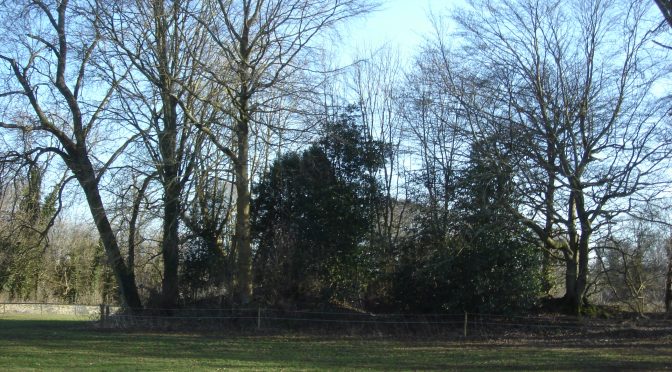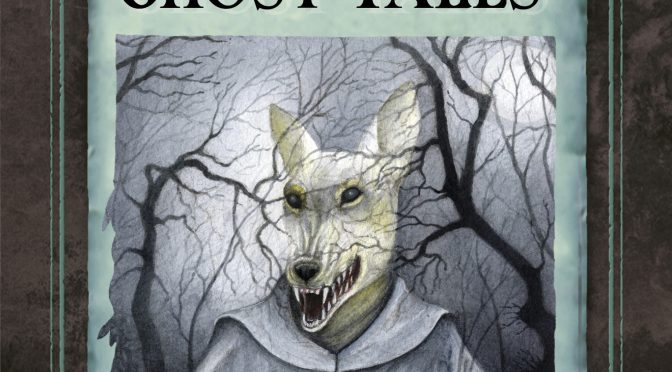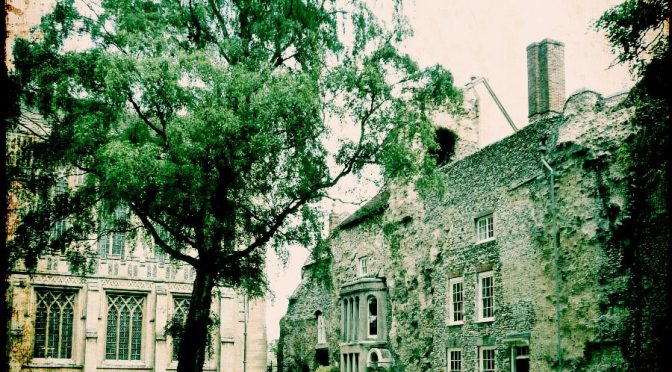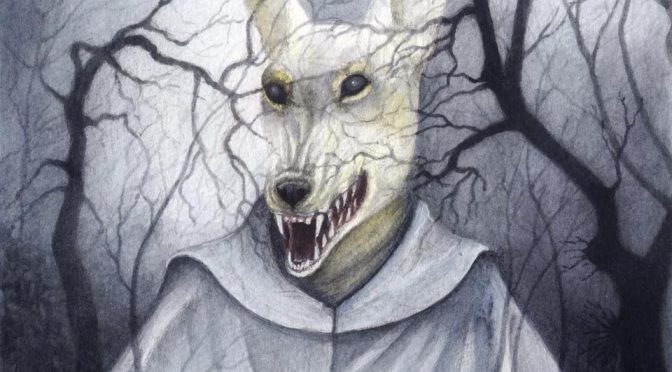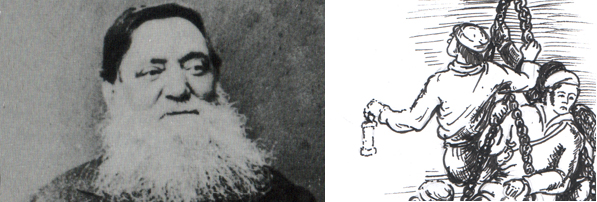Lovely new write up for Suffolk Ghost Tales, with an interview Cherry and I did with Sheena Grant of the East Anglian Daily Times:
Category Archives: ghost tale
Ghosts of the Mounds: prehistory and ghostlore in Gloucestershire and Wiltshire, a beginning
Lately, I’ve been intrigued by the different ghosts that emerge from the many, many prehistoric barrow mounds in the west. I’m doing talks on Gloucestershire’s ghosts and Wiltshire’s folklore, and I’ve been reminded of how, here in the west, they form an important part of the folklore of the region. This blog, probably the first of a few, explores some of the hauntings and their tales – if you’d like the full tales, you’ll find some of them in my books Wiltshire Folk Tales and Gloucestershire Ghost Tales.
Ghosts, fairies or giants? The case of Hackpen Hill
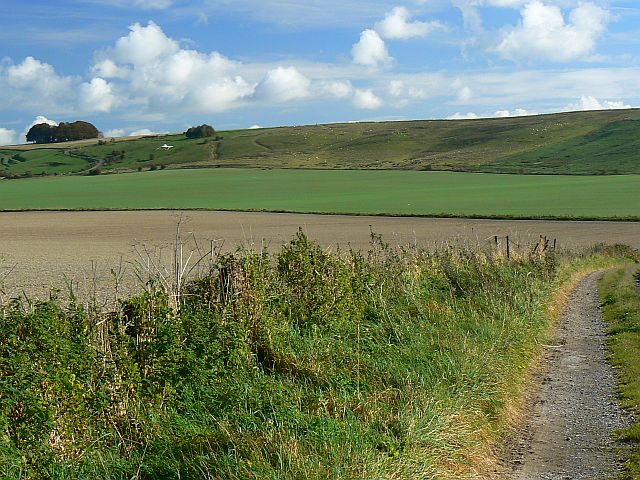
Back in antiquarian John Aubrey’s time, the 17th century, the mounds and the downland on which they were situated were things to be feared. In the long barrows, giant’s bones resided, and the very ground could open up and take you – like these incidents on Hackpen Hill near Avebury:
‘Some were led away by the Fairies, as was a Hind riding upon Hakpen with corne, led a dance to the Devises. So was a shepherd of Mr. Brown, of Winterburn-Basset: but never any afterwards enjoy themselves. He sayd that the ground opened, and he was brought into strange places underground, where they used musicall Instruments, violls, and Lutes, such (he sayd) as Mr. Thomas did play on.’[i]
Aubrey collected these snippets in his collection Remaines of Gentilisme and Judaisme, of 1686-7 – but not published until 1881 by the Folklore Society. It is a collection of folklore from all over Europe, collected together willy-nilly, with a little local lore slotted in. Aubrey recorded that the people in the area thought that the long barrows around were the graves of giants. Round barrows were easily recognised as graves, too. Aubrey records that on Hackpen Hill ‘in a barrow … after digging, was found at thigh-bone of a man and several urns’. Many people at that time believed that what they were finding were the remains of Saxons and Vikings in these mounds. In some cases, of course, this was true – also on Hackpen Hill in the late 19th century Canon Greenwell, ‘a prolific excavator of barrows’, found evidence of the reuse of a Bronze Age barrow, finding a later Saxon inhumation with an iron spear over a cremation burial with a bronze dagger[ii]. Aubrey and his contemporaries were hindered by the lack of knowledge that there had been earlier cultures in Britain than that of the Iron Age that the Romans encountered and wrote about. Geoffrey of Monmouth explains away Stonehenge by ascribing it to Merlin’s magic (and giants in Africa … but that’s another story) but Aubrey and his contemporaries realised it and the other standing stones and burial mounds were much earlier, his generation creating a long-lasting misconception about druids and stone circles that still continues in the national psyche.
The haunting of the Woeful Dane
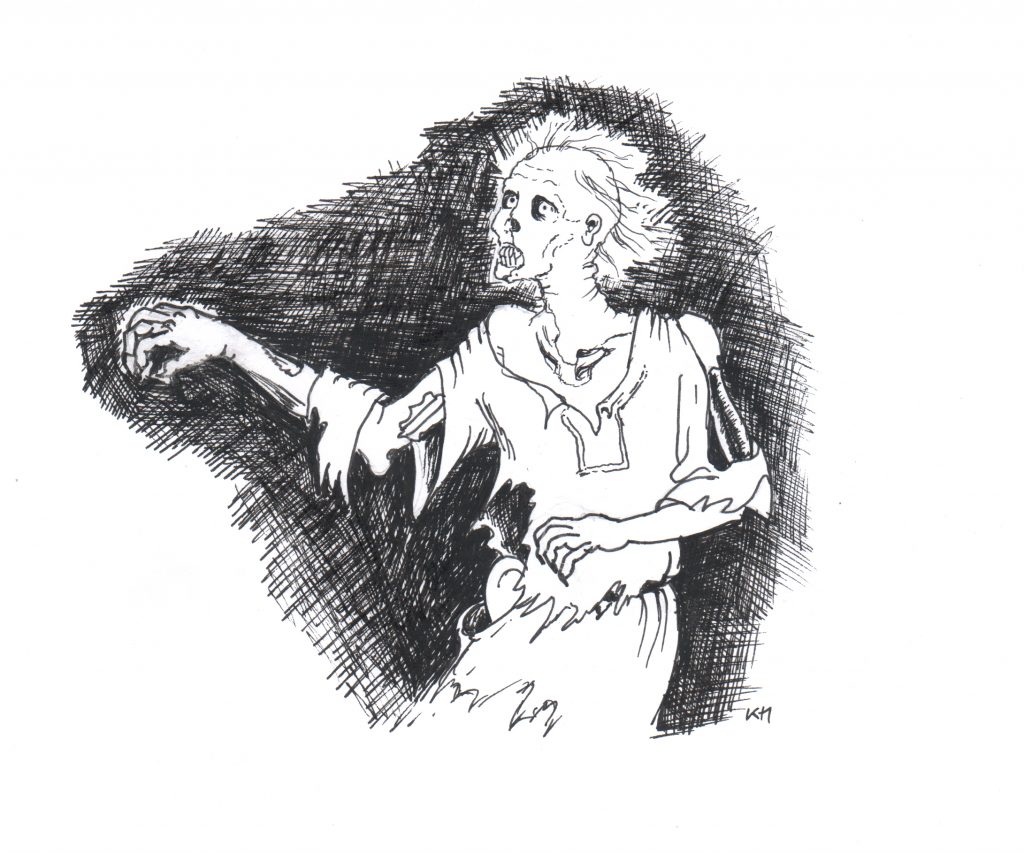
The idea, though, that it was Saxons and Vikings in the mounds lingers… In Gloucestershire, one of my out and out favourite stories is that of Molly the Dreamer of Minchinhampton, who encounters the ‘Woeful Dane’ (actually a Saxon) who is said to have named Woefuldane’s Bottom near the Long Stone. He was Wolfhang, and his shade haunts the lane. To Molly, though, he promised aid in the form of the glittering gold hidden in his grave – I won’t tell the tale, it’s in Gloucestershire Ghost Tales – but suffice to say that she didn’t get it! Sadly, the great battle where the Saxons under Wolfhang routed the Danes exists only in the imagination of the people of Minch – the name Woefuldane probably derives from a place where a wolf was caught[iii] … although that might shed some light on the see-through, headless black dog that also haunts the lane, and who caused carters in the 19th century to insist on being blindfolded on that stretch of road at night, lest they see its insubstantial form. Gatcombe Tump, Wolfhang’s mound, is a Cotswold-Severn type long barrow – dating from the early Neolithic, about 3500BC.
‘She did come out of the mound’

In the story at Manton barrow, near Marlborough, the tale goes that a finger bone was borrowed by a journalist after the excavation in the early 20th century, and when taken to a séance, a wronged Saxon princess was conjured up by the medium! Manton barrow is a round barrow in which were found the remains of ‘a woman of considerable age, and that their period was somewhere during the latter portion of the Bronze Age.’[iv] But there is a coda that seems more real. The grave goods were taken to Devizes Museum, but the skeleton was returned to the grave. Soon after, a woman of the village complaining to her doctor: ‘every night since that man from Devizes came and disturbed the old creature she did come out of the mound and walk around the house and squinny into the window. I do hear her most nights and want you to give me sammat to keep her away.’[v] Alcohol is secretly prescribed, and the old woman sleeps soundly from then on but I feel sorry for the lonely ‘old creature’, perhaps only seeking companionship after her lonely grave was disturbed and her spirit released.
‘I suddenly saw before me a long barrow’
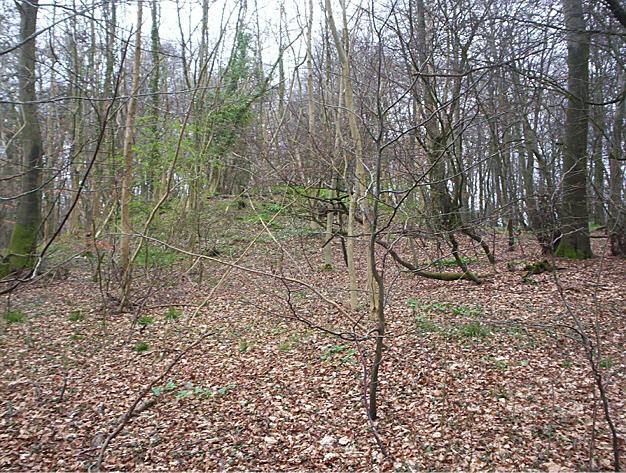
The idea that the spirits of the dead are disturbed by excavation can also be seen in the tales of ghosts around the hard to find West Tump. Another Cotswold-Severn long barrow, it was discovered by the well-known Gloucestershire archaeologist, G B Witts, by accident while on a Bristol and Gloucestershire Archaeological Society outing in 1880. Witts, on horseback as opposed to in a carriage, took a shortcut through Buckholt Woods, and as he was riding through the portion the OS map calls Buckle Wood, with, as he says, ‘my mind intent on archaeology, and I suddenly saw before me a large barrow!’[vi] The barrow was duly excavated, the innumerable human remains removed in this case to the museum at Cheltenham, and, in time, nature covered the mound once more. But the people knew that the spirits were restless, and figures began to be seen around the mound, figures in leather cloaks, inked with tattoos and bearing stone-tipped spears. The ghosts in these last two stories, both from an era when people knew more about the pre-history of Britain, are more up to date, the ghosts seemingly reflecting the real occupants – or at least people’s imagined ideas of them.
It seems we create our ghosts anew with every generation, assimilating new information. What ghosts do the mounds conjure a hundred years on from the excavation of Manton Barrow? The mounds are now more in use than ever, visited by walkers and the curious – and by modern pagans honouring the ancestors and reinventing and imagining what might have happened when the original dead were laid to rest. But we know not what expectations the makers of the mounds had. Did they expect the spirits of their ancestors to lie quietly, as we expect of the dead today, or did they envisage a more active role for the spirits, perhaps, in the Bronze Age at least, still working to protect the living – many round barrows are placed on hills and ridges, or on boundaries. Were they set there to guard the land and the people in some way? What then if the barrow is disturbed? We can imagine that there would be dire consequences in the stories of the folk who raised the mounds… Did those stories linger? Perhaps it’s no wonder that the idea of ghosts – or fairies – in the mounds has come down over the centuries even to our materialist age.
Images:
- Featured image: Gatcombe Tump, near Minchinhampton © Kirsty Hartsiotis, 2014
- A view of Hackpen Hill, near Winterbourne Bassett
cc-by-sa/2.0 – © Brian Robert Marshall – geograph.org.uk/p/1010217 - Wolfhang © Kirsty Hartsiotis, 2015
- The ‘Old Creature’ © Kirsty Hartsiotis, 2011
- West Tump ( Long Barrow )
cc-by-sa/2.0 – © Michael Murray – geograph.org.uk/p/937490
References:
[i] Britton, John, ed. The Remaines of Gentilisme and Judaisme by John Aubrey RSS 1686-87 (The Folklore Society, 1881), p. 30
[ii] http://www.themodernantiquarian.com/site/4598/hackpen_hill_wiltshire.html
[iii] Palmer, Roy The Folklore of Gloucestershire (Westcountry Books, 1994), p. 3
[iv] http://www.wiltshireheritagecollections.org.uk/wiltshiresites.asp?page=selectedplace&filename=WiltshireSites&mwsquery=%7BPlace%20identity%7D=%7BPreshute%20G1a%7D
[v] Whitlock, Ralph Wiltshire Folklore and Legends (Robert Hale, 1992), p. 24
[vi] Witts, G. B. ‘Description of the Long Barrow called “West Tump,” in the Parish of Brimsfield, Gloucestershire’
Transactions of the Bristol and Gloucestershire Archaeological Society, 1880-81, Vol. 5, p. 201-211
Suffolk Ghost Tales for the Dark Nights of Winter
Have a look at this new blog I’ve written for The History Press in advance of Suffolk Ghost Tales coming out on the 13 December about Suffolk’s ghost tales, Suffolk’s most famous ghost story writer, M R James and the tradition of telling ghost stories at Christmas…
‘All places have ghost stories. Laurie Lee, in Cider with Rosie, says, ‘There were ghosts in the stones, in the trees, and the walls, and every field and hill had several.’ He’s talking about Gloucestershire, but, even now, a hundred years on from when Lee was a boy, it still holds true across the country. But of all counties, Suffolk is a little bit special when it comes to ghosts…
The low cliffs, pebble beaches and faded hotels of his home county have become fixed in our minds as subtly dangerous places with a hint of folk horror. All those lost places… Visit Dunwich to see the last grave of All Saints teetering on the edge of the cliff, visit Aldeburgh and see the House in the Clouds bright and distant across the marshes, go to lonely Minsmere and see the ruined chapel, all that remains of a monastery and village abandoned, go to Covehithe … if it’s still there.
Suffolk is, after all, the home county of one of the greatest tellers of ghost tales – M R James. James moved to Suffolk aged three, when his father became rector of Great Livermere, up near the Norfolk border. His family lived there from 1865 until 1909, so James had a foot in Suffolk for much of his life. Several of his tales, ‘Oh, Whistle and I’ll Come to You, my Lad’, ‘A Warning to the Curious’, ‘The Ash-tree’ and more, are set in Suffolk, and develop the disquieting aesthetic we now recognise in the landscape.’
Read the rest of the article here:
https://www.thehistorypress.co.uk/articles/suffolk-ghost-tales/
The Secret Disclosed: ghostly riots in Bury St Edmunds
I’m all about ghosts at the moment, what with Suffolk Ghost Tales coming out next week. But this blog is a bit naughty, as it’s actually inspired by the background to a story in my previous Suffolk book, Suffolk Folk Tales. The question is, how do ghosts come to be? You’d think that it would be by someone dying and proceeding to haunt a place, wouldn’t you? But that’s not always the case … sometimes they are conjured up out of the collective mind of the people, and such is the case for the Grey Lady of Bury St Edmunds in Suffolk.
Once upon a time there was a woman by the name of Margaretta Greene. She was a scion of the Greene family of Bury, best known, perhaps, for the brewers Greene King. She lived in a very strange building indeed, a building that had once been part of the vast west front of St Edmund’s Abbey, but was – and is – now houses. So vast was the abbey that just one side of the west front contains these houses, organically emerging out the rubble stone that lay beneath the dressed that was all taken away to build other parts of Bury after the monastery was dissolved in 1539. The Marquis of Bristol, who owned the abbey land from 1806, had the west front converted into houses, as well as beginning the Abbey Gardens we know today. They were nearly destroyed in the 1950s, but fortunately are still with us today.
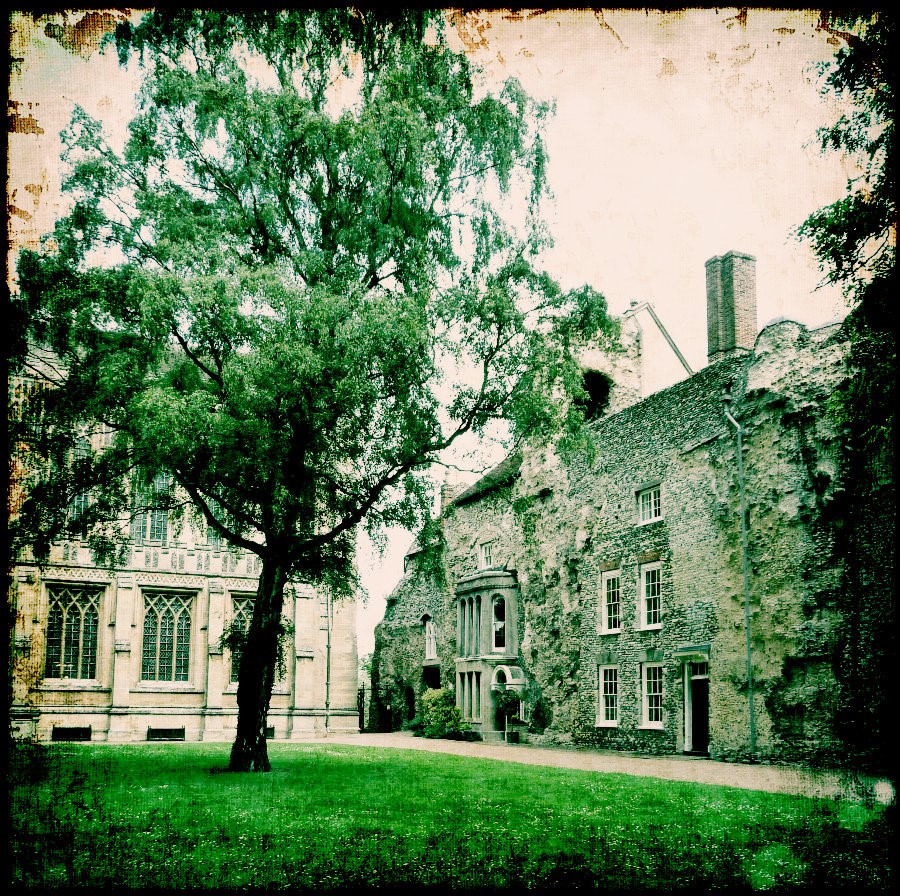
These houses lie close to the Great Churchyard between the abbey and St Mary’s, and it’s easy to imagine the affect this setting might have on a Romantic young woman… In 1861 she privately published a slender volume entitled The Secret Disclosed: A Legend of St Edmund’s Abbey ‘by an Inmate’ telling a sorrowful tale of unrequited love, royal conspiracies, murder, poison, and death in the secret tunnels that were said to lie under the town connecting its religious buildings. The protagonist of this tale, young nun Maude Carew and Queen Margaret of Anjou, the definite baddie in this melodrama, she said, haunted the Churchyard every 24 February at precisely 11pm.
The people of Bury fell for it hook, line and sinker. Well, why wouldn’t they? Margaretta had said that she’d heard footsteps in her house, which had led her to find a casket containing the manuscript which she had simply transcribed … well, it had to be true, didn’t it?
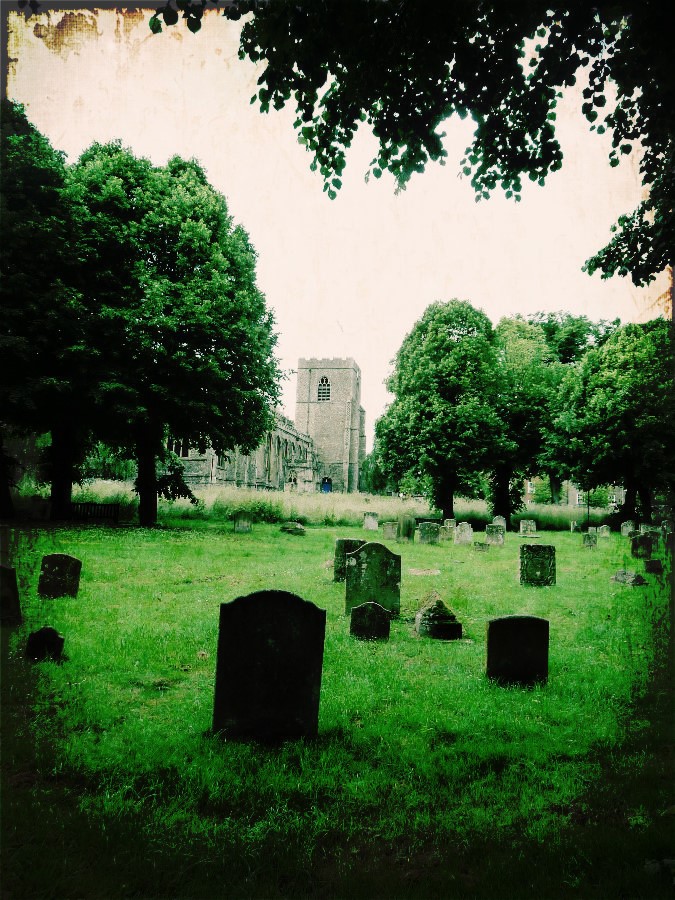
The next 24 February, 1862, a horde of folk gathered in the Churchyard to see the ghosts. Did people really expect to see a ghost? It seems so, as by the time 11pm approached, the crowd was so excited as to be almost hysterical. And when, inevitably, the ghost didn’t appear? Well, some said that it did – but no one could agree on what the ghosts looked like. Were they white? Were they black? The mood turned ugly as the crowd realised they’d been duped. All hell broke loose, the ghost watchers rioted – and indeed a window was broken in Greene’s house.
And yet, Maude Carew, despite being a fictional character, lived on as a ghost in Bury. She became the Grey Lady of Bury, taking over the personalities of other Grey Ladies in the town and roving way beyond her proper haunting ground of the west front and churchyard. Can she possibly be the female ghost who is said to haunt Cupola House in the Traverse, along with the object of her desire, Father Bernard – aka the brown monk? More realistically, a Grey Lady, dressed in the robes of a nun, is said to haunt the Fornham Road area, including St Saviour’s hospital. Now, this isn’t unreasonable, if the story Greene was true, as it was at St Saviour’s hospital that the unfortunate victim in the story, Humphrey, Duke of Gloucester, died that 24 February 1447.
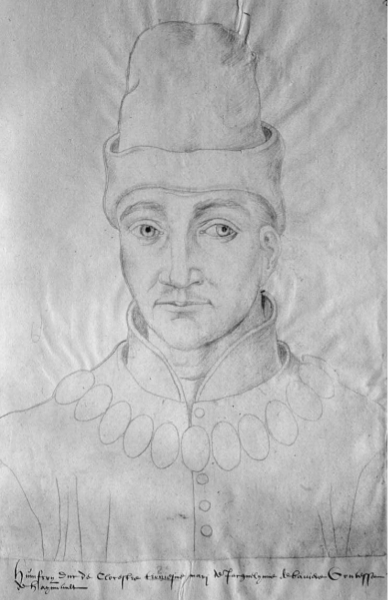
Yes, the tale does have a historic background – one familiar to both students of history and students of literature, as his tale is immortalised in Shakespeare’s Henry VI, Part II. Humphrey, Duke of Gloucester was Henry VI’s uncle, and was Lord Protector, and, after 1435, was heir to the throne. In 1441 his wife, Eleanor, was arrested on a charge of witchcraft, for, with ‘the Witch of Eye’ (no, not the Suffolk Eye, ‘Eye next Westminster’) Margery Jourdemayne, it was prophesised that Henry VI would die that year. Of course, he did not, and this was the end of Humphrey’s career – and Eleanor and Margery’s lives. He was summoned to a parliament at Bury in 1447. There was a rumour Humphrey was poisoned, but he might also have had a stroke, as he lay unconscious for three days after a banquet. If he was poisoned, it’s just as likely that it was by the Earl of Suffolk, William de la Pole, as it was thought that Suffolk’s enemies might rally to Gloucester… And that is what was whispered during Cade’s rebellion in 1450 that saw Suffolk fall from grace, although there is no evidence that he was poisoned. Dark, complicated times – I think we can identify with them!
This story has been taken from Haunted Bury St Edmunds by Alan Murdie (Tempus, 2006). Murdie is a great expert on Bury’s ghosts – and is also the Chairman of the Ghost Club. I fell in love with the tale when I first read it, researching Suffolk Folk Tales back in 2012, and think it sad that A Secret Disclosed isn’t available … anywhere! Not even on archive.org. There is a copy in the Record Office in Ipswich – but what other copies exist? It would be a shame for the ghost to live on, but the original story to die…
Images:
The images of the churchyard and west front are copyright Kirsty Hartsiotis, 2017
Copyright info for the image of Humphrey, Duke of Gloucester can be found here.
Suffolk Ghost Tales – out very soon!
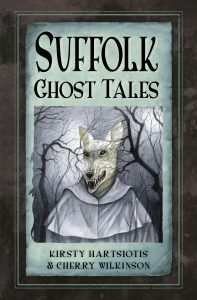 Very exciting news! My new book is out in just a few weeks on the 13 December – Suffolk Ghost Tales, part of The History Press’s ghost tales series. This time, it’s been a really special collaboration – with my mother, Cherry Wilkinson.
Very exciting news! My new book is out in just a few weeks on the 13 December – Suffolk Ghost Tales, part of The History Press’s ghost tales series. This time, it’s been a really special collaboration – with my mother, Cherry Wilkinson.
Here’s the blurb:
SUFFOLK – a peaceful, rural county with big skies, rolling fields, unspoilt beaches, quaint towns and villages. But all is not as quiet as it seems. Could that be the eerie clanking of gibbet chains at the crossroads? Did you see a desolate face at an upper window or a spectral white form lurking in the hedgerow? Cats are not always lucky – and beware a north Suffolk Broad in the still, small hours of Midsummer Night . . .
Kirsty Hartsiotis and Cherry Wilkinson retell, with spine-chilling freshness, thirty fabulous ghost tales from all corners of this beguiling county. So pull up a chair, stoke the fire and prepare to see its gentle landscape in a new light.
Cherry and I moved to Suffolk when I was two, living first near Hadleigh, later in Bury (and a couple of stints over the border in Norfolk, shh). I left, but Cherry still lives in the county, near the coast. Her association goes back long before I was born: her great-aunts who lived in the house next to Lindsey’s little chapel, and through school at St Felix, Southwold and holidays at Sizewell before the power station changed everything… We had a chance to dig more deeply into Suffolk’s heritage a few years ago when I wrote Suffolk Folk Tales (The History Press, 2013).
But there were many places we realised we’d never seen – well, this book has gone a long way to rectifying that. It’s been quite a ride, discovering these wonderful, spooky – often sad, sometimes hair-raising! – stories and working together to create the tales we’ve told. Some you might know well – there’s the story of Toby, the black drummer, and the sad tale of the Lowestoft witches. We’ve travelled all over the county visiting the locations of the tales, talking to the current owners of buildings, and discovering some new stories from people we know.
Suffolk is the ghost county – childhood home of M R James, and the setting for some of his scariest tales. Katherine Soutar‘s wonderful cover illustration hooks into that unheimlich world on the edge of our own… Our tales tread a point somewhere between storytellers’ local legends and the literary ghost story. We hope you will share these stories, too, and keep the tales of the dead alive.
We’re celebrating with a launch event in Wenhaston Village Hall, near Southwold, on the 16 December 12pm. Come and hear tales and songs, and celebrate with a glass of wine!
The Life, Labours and … Ghosts of a Forest Collier – by Kirsty Hartsiotis

It’s fitting, perhaps, to be posting this on the death day of William Morris. Exactly ten years older than Morris, and dying in the same year, the man pictured here isn’t known at all. An internet search for Morris brings up thousand upon thousand of entries. For this man, Timothy Mountjoy, the references are expended by the end of the first page[i]. And yet, like William Morris, Timothy Mountjoy was a passionate, obsessive man, deeply committed to the cause of bettering the conditions of life – in Mountjoy’s case for his fellow miners and their families. Like Morris, too, he was compelled to write. In his case, it was a memoir of his life and the Forest of Dean in the mid-19th century, rather than poetry or actual Socialist polemic against the mores of their shared world.
I discovered Timothy Mountjoy while researching Gloucestershire Ghost Tales. There are many ghost tales from the Forest, but I was struggling to find one that spoke to me, that I wanted to tell. Then I found this strange tale of dark, drunken deeds on Ruardean Hill, and what happened after … which became ‘The Body in Pan Tod Mine’. And the source? Mountjoy’s book.
Now, this book is, on the face of it, a strange source for a ghost story. Mountjoy was a Baptist minister, a committed Christian who expends a lot of ink in The Life, Labours and Deliverances of a Forest of Dean Collier in telling us about his faith. He was one of the men who brought trade unionism to the Forest miners, was the General Secretary of the first union for coal miners in the Forest, the Forest of Dean Miners’ Association, and fought to improve their lot throughout his life – though with little thanks and only varying success! But hidden in the interstices of his book are fascinating glimpses of another life, one of haunted woods, of dark deeds and of Mountjoy’s own uncanny second sight. In Gloucestershire Ghost Tales, his story is told in ‘The Body in the Pan Tod Mine’ – which, it seems, Mountjoy (and the rest of the Forest, according to him!) witnessed. Note, dear readers – there’s a little extra ‘ghost’ tale at the bottom of this post … read on!
The Life, Labours etc. is exceedingly rare – though I would dearly love my own copy, they are not available for love nor money[ii]! So I went to Gloucestershire Archives to read it, armed with a notebook and a pencil. Everyone else seemed to have piles of documents, so I felt a little small sitting there with my single tiny volume. But it was worth it. Timothy Mountjoy should be better known.
Born at Littledean Hill in 1824, he was born into a rapidly changing world. In the 1820s the Forest of Dean was just about to become a major place of industry. Iron and coal had been mined there since at least Roman times, and small scale free mining had taken place since the reign of Edward I (a reward for Foresters who had taken part in the Siege of Berwick, apparently!). But the industrial revolution changed the pace and scale of mining forever. After all, what did it need more than anything? Iron and coal. Hundreds of pits were opened up – but as Mountjoy records, the conditions for the men who worked in them – and their families – were bad to the point of dangerous. He describes how, in 1819, 4 men were killed when their chain link (probably made of flat iron links and hemp rope) broke. The youngest man, Meredith, was only 12, the same age that Mountjoy started in the pits 17 years later.
Mountjoy own start in life was tenuous – as a baby he cried day and night, until the girl who was watching him was minded to throw him into a nearby well! As a young lad in the pit he was careless one day and knocked his head fooling around – knocking himself out and falling down the pit. He got away with bruises, but it must have been experiences like that that made him so keen to improve the conditions (and pay, of course) of the miners, but also made him turn to religion.
But Mountjoy knew things … he speaks how he would dream true, and recounts how once, he dreamed that there were lots of men milling about Prospect Pit, and as he came in he saw there was a man lying dead. Alarmed by the dream he reported it to the bosses (though maybe not to the man he saw dead) but nothing happened. Then, a cry was heard, and it was discovered that the roof of part of the pit had collapsed, crushing a boy, Mark Williams, to his death beneath. Mountjoy was sure his dream had been a warning. His first wife, too knew things too. He records how she told him early in their marriage that she would die in her 35th year … and she did.
He describes forgotten ghosts, too. Who was the ghost by the crooked pear tree that his sister saw, and who was haunting the Temple[iii]? He himself had an experience. One night when he was walking over Owl Hill homewards through the Heywood Enclosure, the woods closing in on him as he went, the night dark under the trees … and there, eyeball to eyeball with him, a white face, two huge dark eyes… He backed away… It followed … and so it went until the edge of the wood when a shaft of moonlight revealed the spook – a calf and its mother! Full of relief and chastising himself for believing for a moment that ghosts really existed young Timothy made his way homewards only to see a white shape rise in front of him when he was nearly home. Hair standing on end, Timothy stopped – but the spook took fright at the sight of him and legged it … and Timothy saw he was leaving a trail of potatoes as he fled. No ghost there, but a potato thief in a sheet!
Notes:
[i] You can find out about him in Four Personalities from the Forest of Dean by Ralph Anstis (Albion House: Coleford, 1996)
[ii] There is a booklet of extracts from the book Hard Times in the Forest by Timothy Boughton and Fred Mountjoy (Forest of Dean Newspapers Ltd, 1971) but this is almost as unavailable as the book itself!
[iii] This is Solomon’s Temple, an 18th century house built on what is now Temple Lane – but of course a real temple was discovered many years later near Littledean Hall, a Roman temple!
The Woman’s Wraith at Stroud Short Stories
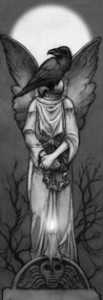 In just ten sessions, Stroud Short Stories (SSS) has become a Stroud institution. I’d never submitted a piece before, but when the organiser, John Holland, mentioned that the November session was going to be an Eerie Evening, and with Gloucestershire Ghost Tales recently off to the publisher, I knew I had to apply with a tale from the book. SSS often gets a huge number of submissions, so it was a great privilege to be selected – thank you John and Nimue Brown, the two selectors!
In just ten sessions, Stroud Short Stories (SSS) has become a Stroud institution. I’d never submitted a piece before, but when the organiser, John Holland, mentioned that the November session was going to be an Eerie Evening, and with Gloucestershire Ghost Tales recently off to the publisher, I knew I had to apply with a tale from the book. SSS often gets a huge number of submissions, so it was a great privilege to be selected – thank you John and Nimue Brown, the two selectors!
It was such a fun evening. These events sell out early; the last time Anthony and I tried to go we didn’t realise that, and were turned away! Doing a story seemed a good way of getting a guaranteed seat… I was on first (thanks John!) with The Woman’s Wraith, and wanted to set a spooky tone. I hope I did! Reading is very different from storytelling – I confess I prefer the freedom and intimacy of the latter, but there was a certain satisfying pleasure in reading what I wrote, rather than the usual extempore rendering of the tale.
I won’t mention all of the tales told that night, just to say that the quality of both tales and reading was very high, but I hope you will indulge me while I mention a few. My absolute favourite was Steven Connolly’s A Winter Wedding, capturing the delusion, the mind’s tricks of a dying man on the unhappy Franklin expedition. My Fire Springs colleague, David Metcalfe, sings a song about Franklin, so I felt a real leap of delight when I realised what the tale was about, and this tale was a sensitive and delicate account of what we know happened, and what might have occupied one man’s mind as the cold bit deeper and deeper…
Simon Piney’s The Ghastly Rolling was excellently performed in rich round tones – a classic ghost tale, in which the protagonist has a horrible tale to tell … and is a warning to the curious. Not liking crowds much, the cheese rolling on Cooper’s Hill has never had a huge amount of appeal to me, and now I am even more wary! I would love to know, but didn’t get a chance to ask, if the tale had any actual folklore in it.
And Tony Stowell’s The Spirit is Willing was very funny – I can only hope that a ghostly afterlife doesn’t include such meetings, though the solution to the problems that ghosts face was ingenious!
Of course, for me, one of the best things was chatting to the other writers and the audience, and also performing under the artwork of the superb Tom Brown – featured here – whose poster reminds me of a ghost tale I heard in York Cemetery, and even experienced … but that’s another story!
And to find out about The Woman’s Wraith, come back to the blog as the next post tells the story of that tale, an ill-fated canal, and of one of Gloucestershire’s worst poets… And of course, if you weren’t lucky enough to be there on the 15th, you can read the story itself in Gloucestershire Ghost Tales!
Image © Tom Brown

